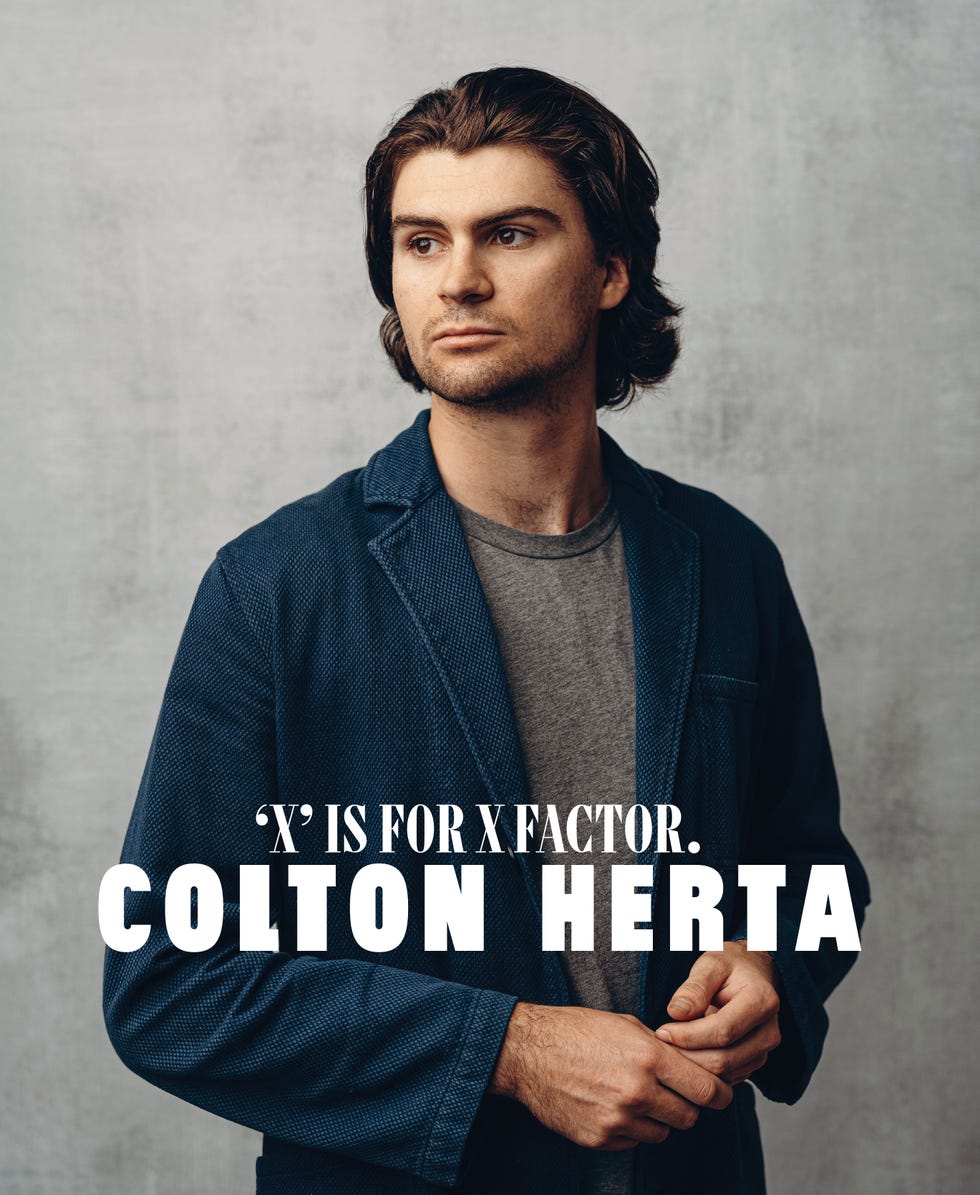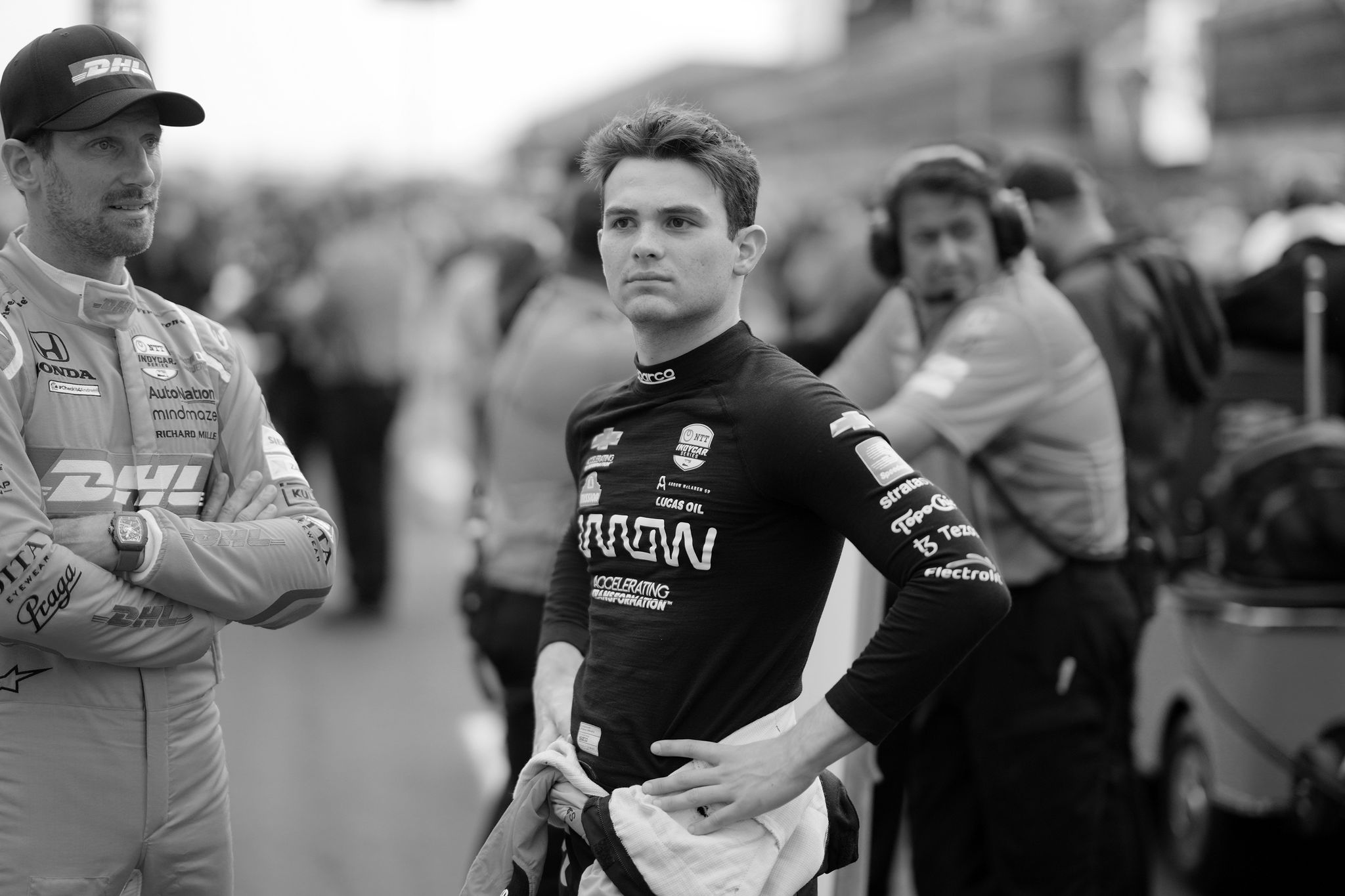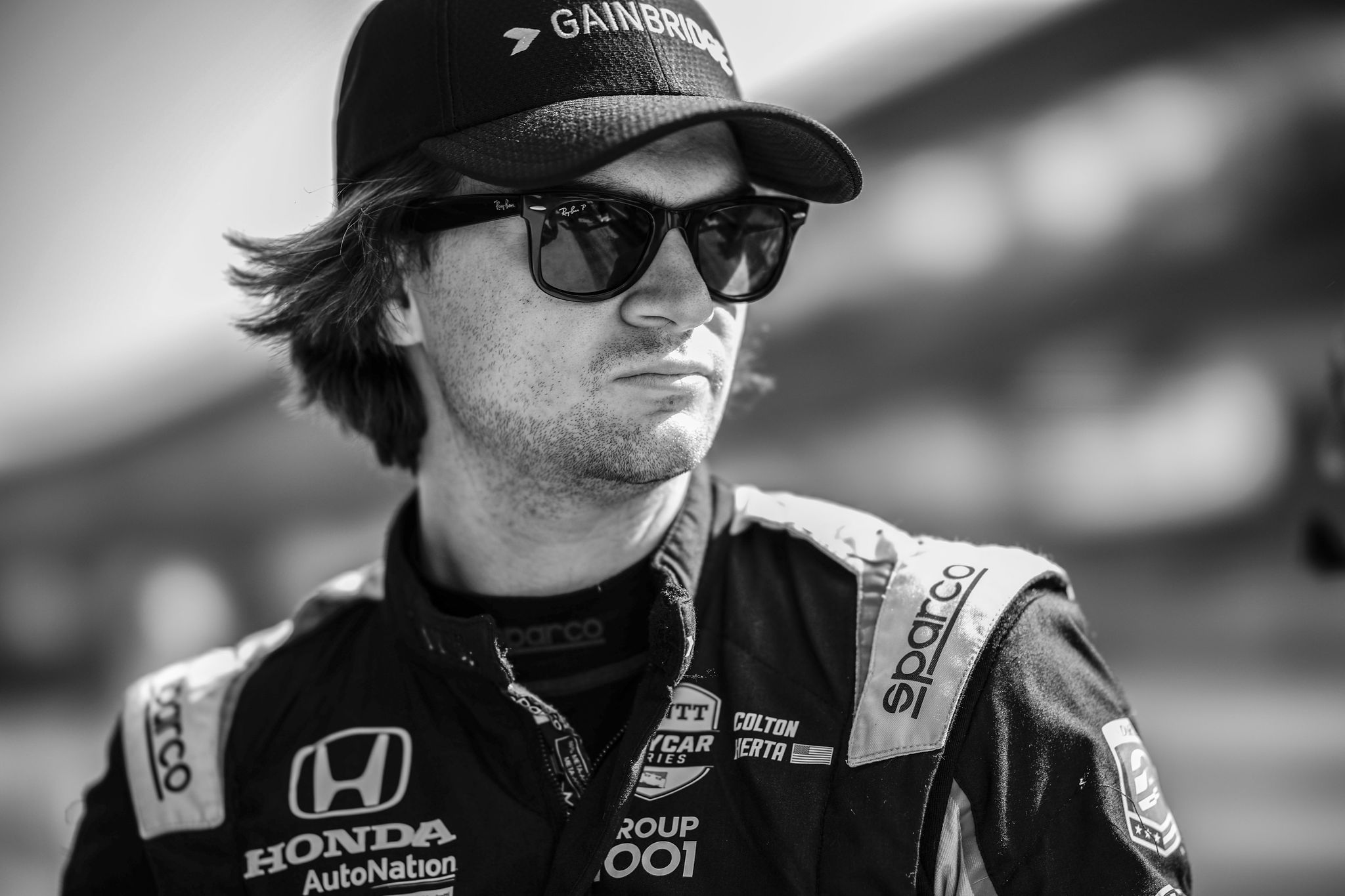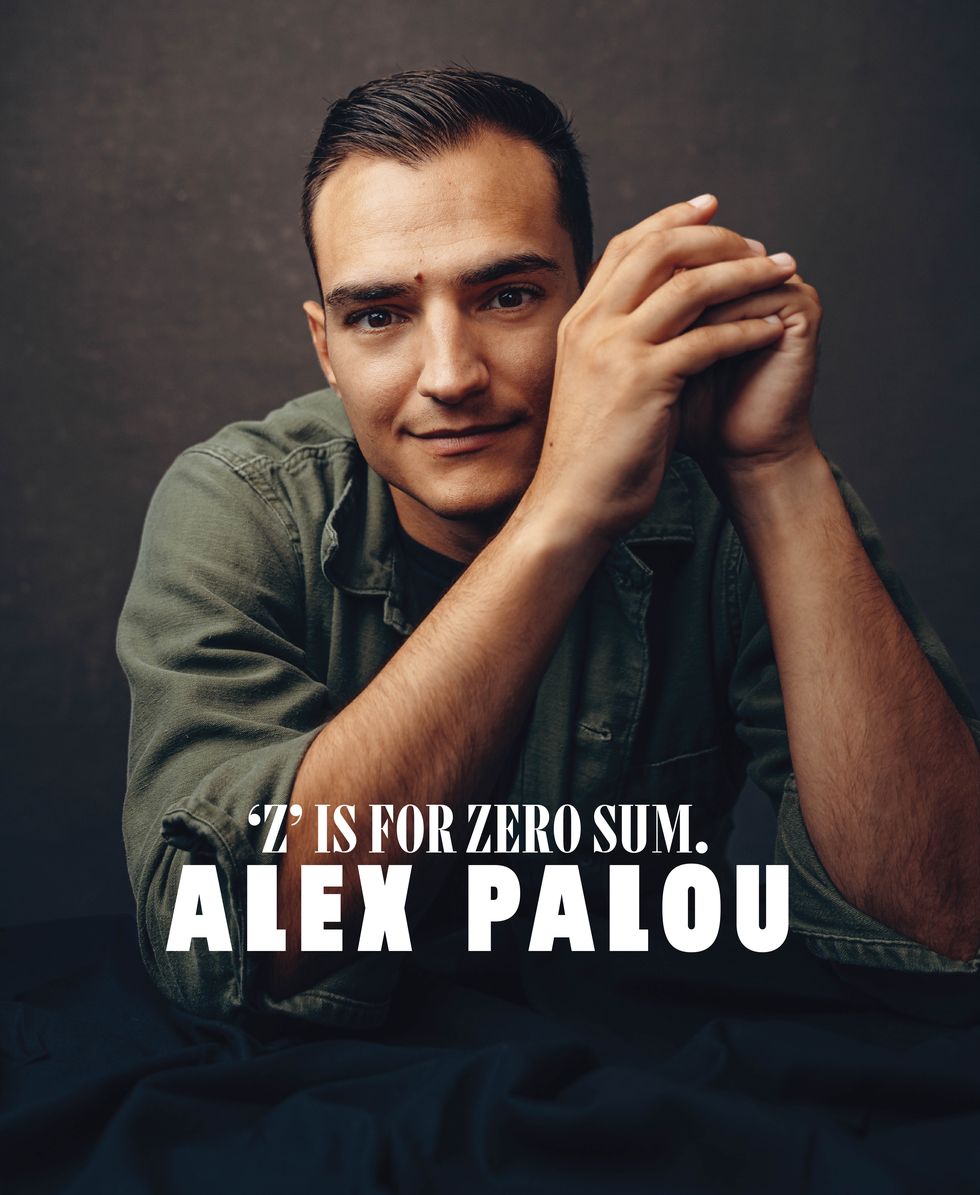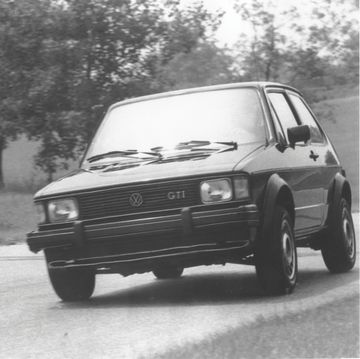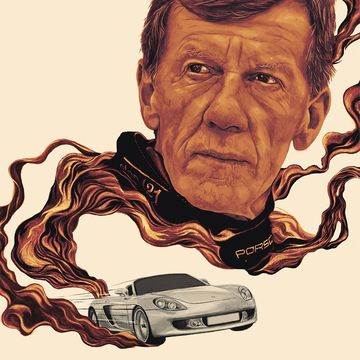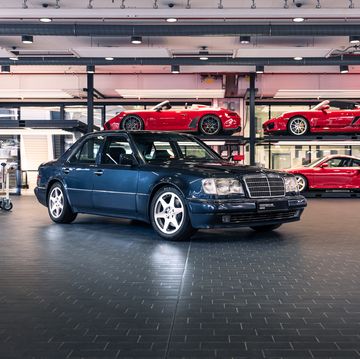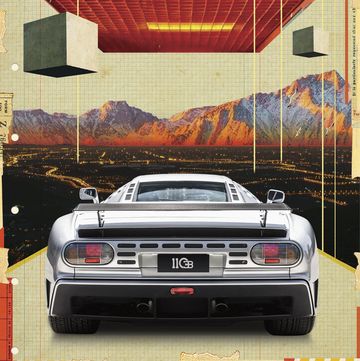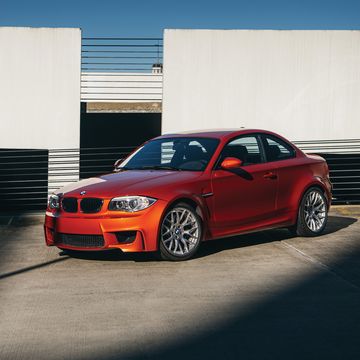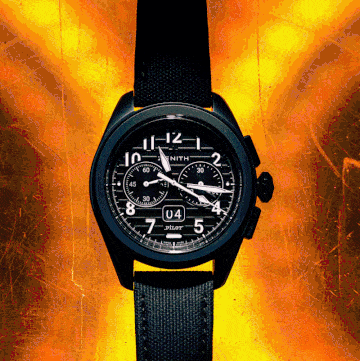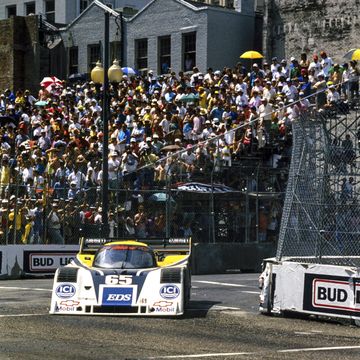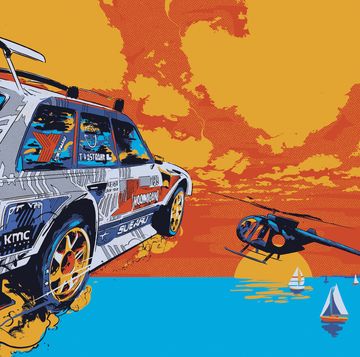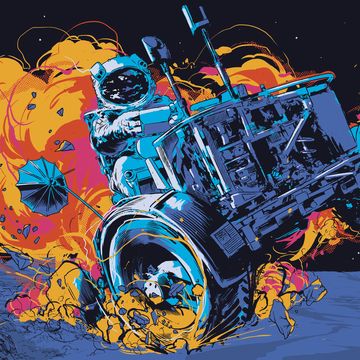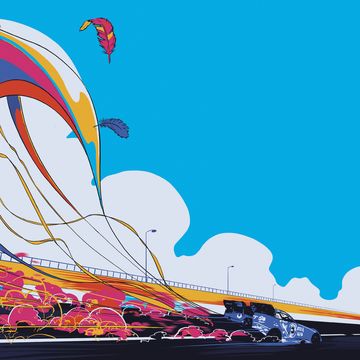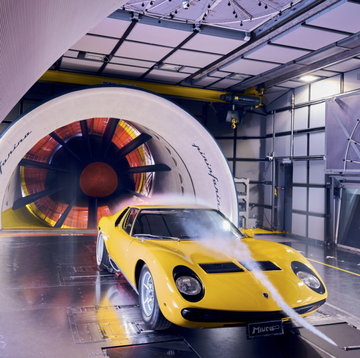Pato O’Ward and Colton Herta are stars locked in intersecting orbits. O’Ward, a 23-year-old Mexican IndyCar star with an oh-so-Irish name, is on pace for his third top-five finish in the series points in his three seasons of competition. Herta, the 22-year-old Californian son of IndyCar veteran Bryan Herta, has already accomplished that twice. The pair have been teammates three times, tested the same Formula 1 car, and finished one-two in seven separate races of the 2018 Indy Lights season. When O’Ward won the LMP2 class at the 24 Hours of Daytona, Herta was his co-driver who made the winning pass.
This story originally appeared in Volume 13 of Road & Track.
SIGN UP FOR THE TRACK CLUB BY R&T FOR MORE EXCLUSIVE STORIES
From 2018 to 2020, they were the dual rising faces of IndyCar. Then Alex Palou showed up.
Palou is a 25-year-old Spaniard—ancient on the warped timeline teams use to assess racing drivers—who celebrates race wins with fried chicken. While Herta and O’Ward sailed through the North American development series, Palou struggled on Europe’s Formula 1 ladder. After four seasons in Europe, he moved to Japan and blossomed in the 2019 Super Formula Championship. That led to his 2020 rookie IndyCar season with Dale Coyne Racing. When Chip Ganassi Racing’s Felix Rosenqvist moved to join O’Ward at Arrow McLaren SP, Ganassi hired Palou.
While O’Ward and Herta starred on the way to multiple wins and top-five championship finishes in 2021, Palou went one step further. He won his debut with Ganassi at Barber, finished second at the Indianapolis 500, and took two more wins. By the end of the year, he was in complete control. O’Ward came into the finale at Long Beach with an outside shot at the championship but was spun on the opening lap and never recovered. Palou became an IndyCar champion in just his second season.
O’Ward is unmistakable. Watch an IndyCar race on TV, and odds are there will be an onboard shot of the No. 5 McLaren when O’Ward struggles to keep the car on track while passing top-10 cars. On street circuits, road courses, and ovals alike, O’Ward stands out as the driver working harder than everyone else. In other categories of racing, this is speed being scrubbed away. In IndyCar, where a heavier chassis with little downforce and a strange balance races on a variety of bumpy tracks, O’Ward sees his style as a necessity.
“I think the style of IndyCar fits me well,” O’Ward explains. “You’ve got to manhandle the race cars to extract the lap time out of them... It’s a safe race car and a race car that can handle insane amounts of abuse in terms of track, driver, cars touching other cars. If an F1 car were to touch the rear tire of another car, the front suspension would just explode. In IndyCar, you can sideways bump into someone and have no issues. The thing is a tank, and I think that’s different to every other single-seater in the world.”
Competitors recognize O’Ward’s style too. He guessed what Herta and Palou would say about him—that his style was aggressive. Herta praised O’Ward’s steering prowess, noting that they both have particularly fast hands and that O’Ward uses his to balance any car. For Palou, what stands out is how O’Ward channels that success into massive gains on track.
“If he starts really far in the back, he tries to overtake five in a corner. And normally, he makes it work.”
The final restart of the second 2021 Detroit street race with nine laps to go was vintage O’Ward, that is, if anything a 23-year-old does can be considered vintage. He picked off drivers to move to fourth. When he noticed both Herta and Palou on the same preferred tire behind the leader on what should have been the slower tire, he kicked in the aggression.
“When we restarted, I got by Dixie [Scott Dixon], then I got by [Graham] Rahal, and as soon as I got by Rahal, I was right up onto Palou,” O’Ward enthuses. “They weren’t doing anything, they were just staying where they were, and I was like, ‘What are they doing?’ So I’m kind of just like, ‘Okay, I’m going to start sending it,’ and let’s see where it works out. I passed Palou on the outside. Then I got to Herta. I was quicker than Herta, passed him, and as soon as I got to Josef [Newgarden], I was like, ‘This is mine.’”
O’Ward won the final race in Detroit that weekend. With controlled aggression and creativity as a passer that rivals Magic Johnson’s, he thrives in these situations.
In the right conditions, Herta seems the fastest man alive. He has nine poles in three and a half seasons, but that only hints at how much faster he can be on the right weekends. In races like the last two at Laguna Seca, he has been untouchable. Herta describes the style that leads to this speed as a willingness to overstep what the car can do.
“I feel like I’m one of those guys who has to go over the limit to find it,” he says. “Washing up a little bit, maybe running a little bit wide in some corners, just to find that limit, exceed it, and then dive back into shape.”
Herta has quick hands, which he also displays drumming for his band, the Zibs. On track, his ability to find and react to limits were the key to an instant-classic drive at the Indianapolis road course in the rain earlier this season. He went onto dry tires on a damp track a lap earlier than the field and spent the next lap saving multiple bouts of snap oversteer. Then he caught race leader O’Ward on colder tires with just one chance to press his advantage. Pushing beyond that limit to overtake, Herta seemingly lost the car, an oversteer moment so pronounced that it looked more like Formula Drift than IndyCar. He responded by moving his hands off the wheel’s narrow grips to rotate to full lock. Then he flicked the wheel back. It was the save of the century.
He passed O’Ward a corner later and won the race. A comfortable and casual relationship with the other side of the limits of control are where Herta finds his speed, a speed his rivals can’t quite comprehend.
Palou is entirely different. While O’Ward and Herta seem most comfortable pushing the limits, Palou is in constant control. Where Herta and O’Ward’s hands are fast, Palou’s are steady. The ex–Indy Lights teammates have had unforgettable individual races that could demonstrate their clear skill to someone who’s never seen a race before; Palou won a championship over them by turning reliable speed into strong results everywhere.
O’Ward compares his style to a lower-risk Dixon, the six-time IndyCar champion and master of the last two decades of American open-wheel competition. Palou believes he’s “really, really far” from Dixon’s level, but he’s progressing.
“I think it’s quite easy for a racing driver, especially in IndyCar, to be as fast as somebody else,” Palou lays out. “I think Dixon is just better everywhere—consistency, fuel mileage, tire degradation, recovery, setups. Maybe it’s experience, maybe I’ll get there some day, but that’s a goal. Dixon is not a supercrazy, aggressive guy who either finishes first or doesn’t finish. I’m probably more like that style, but I’m not near to the level he’s at.”
In 2021, in Palou’s second Indianapolis 500, his style got him up to the front. Palou had been racing on ovals for just a year, and he was thrust into a battle with now-four-time Indy 500 champion Hélio Castroneves. He lost, but he learned.
“It was my first time leading an oval race, and I didn’t know how to lead,” he says with a sigh. “It sounds crazy, but it’s not like a road course. It’s very different, especially at the Speedway, where you suddenly have clean air and the tow they can get from you is crazy. They just get more speed at the end of the straight. It was fun because I was discovering new things, but it was just, ‘Oh man, he knows a lot better than me what to do.’ He always had everything under control, but we didn’t make it easy for him.”
Palou finished second, and that massive haul of championship points in the year’s lone double-points race set him up to win the title. O’Ward noticed that, and when he found himself on the outside in Turn 1 with a shot at the lead on the final lap of the 2022 Indianapolis 500, he laid back and took the points. Palou’s patience is a proven winning strategy, one the field has to learn to keep up.
What stands out about this trio? For Herta and O’Ward, the answer is on-track respect. Both stress how the other has raced them fairly and predictably, a rare camaraderie in a series deep with competitive teams and drivers.
Palou, meanwhile, is fascinated by how quick Herta can be when everything clicks. “It would be quite interesting to see his data in Nashville last year, Laguna last year, even Long Beach last year,” Palou says. “I would say he was one step further than anyone else. I would like to see how he does it, but I see he’s capable of making these really good laps and extracting the most from the car.”
O’Ward has a theory on this. As he sees it, Herta is at his most comfortable in a car that is both rear secure and capable of taking aggressive inputs. Combined with Herta’s willingness to go over a limit to understand it better, that adds up to a driver who finds his speed at the point where the car no longer fights his aggression.
Herta is clearly stronger at a track like Laguna Seca than at a big oval at this point in his career. Any layout, surface type, and tire compound agrees with Palou. He lets good results come to him. He patiently used his 2021 experience in this year’s Indy 500 to fight back after a poorly-timed caution. His recovery to ninth kept his championship hopes alive.
The three young IndyCar stars are on the radar of Formula 1 teams. Specifically, one team. Palou’s surprising (and contested, as Chip Ganassi Racing also claims to have him under contract in 2023) switch to McLaren in July means that all three are now linked to test-driving deals with McLaren’s F1 operation. Does that mean one of the trio will head to Europe soon? Right now that seems unlikely.
All three drivers should be candidates for every open spot on the grid, but only Palou is qualified for a superlicense without a waiver. And none are known to bring the big money to buy a lower-end ride.
But the door is not closed. Herta actively looked for a seat alongside Michael Andretti as part of Andretti’s pursuit of buying Sauber F1 in the 2021–22 offseason. This offseason, he was offered a seat at Red Bull's Scuderia AlphaTauri that failed to materialize only because the FIA refused to alter its arcane super license rules to accommodate him. Now Andretti has proposed a new-for-2024 team that would seem to be a logical landing spot for Herta, or maybe even O’Ward.
Palou, the old guy, is less optimistic about F1. “I think it’s already a bit too late. It’s never too late, but I’m not 21 anymore. We’ve got a championship here, and the focus is to try to get as many as possible and fight for Indy 500s. I’ll keep racing, and if a really good opportunity comes, I think everybody would take it, but it’s not my focus. It’s not like I’m looking there while I’m racing here.”
It’s exciting in IndyCar. Pato O’Ward, Colton Herta, and Alex Palou are proven winners. They are already a classic three-way rivalry.

